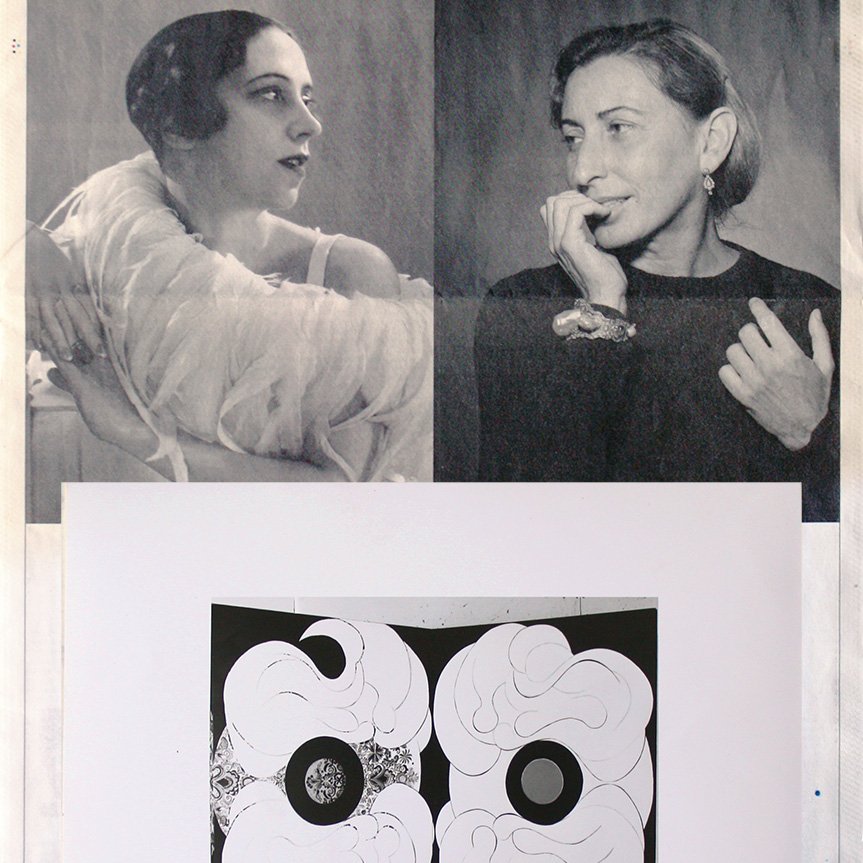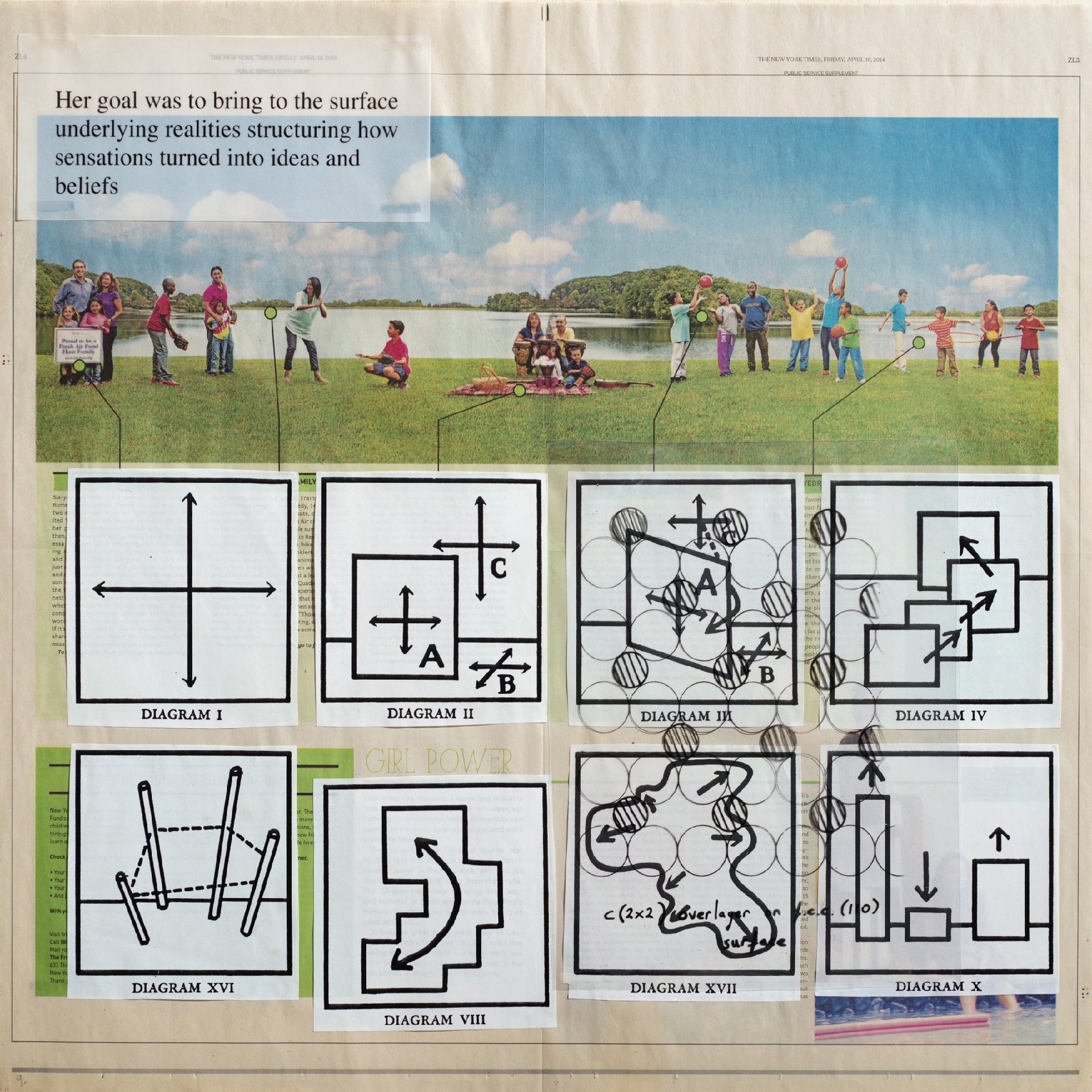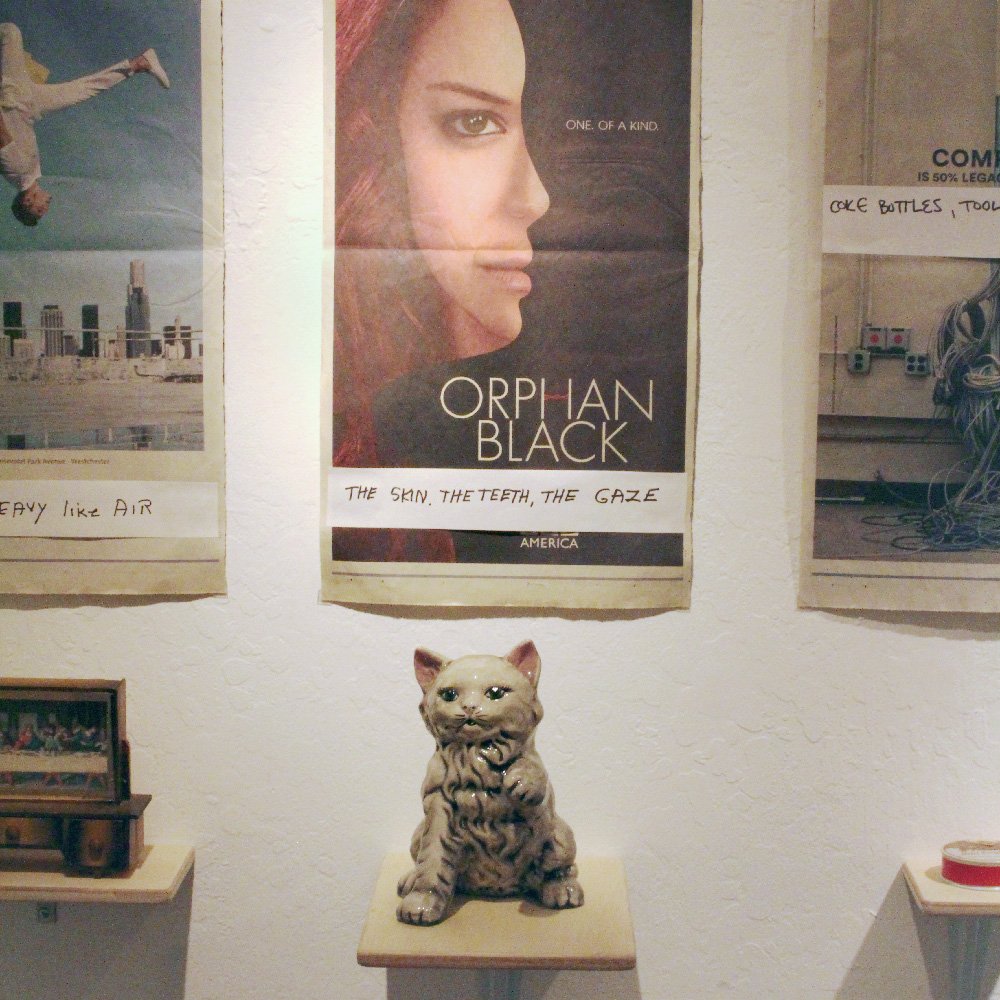Rapoport read The New York Times front to back almost every day, and was drawn to the bold imagery and loaded language of the full page advertisements. She had used the “paper of record” as source material for many projects, including Digital Mudra (1987-89), (in)AUTHENTIC (2007), and many of her ArtBlog entries.
At this stage of her career, Rapoport was sorting and cataloging her extensive archives (now in the Bancroft Library of Western Americana at UC Berkeley), a process of reëxcavating the past. Appropriating newspaper pages as a substrate was characteristic of her tactic of using canvases that were not blank, an instinct which traced back to her Fabric Painting of the 1960s and Survey Charts of the 1970s. Making use of duplicate graphic materials from her papers, she arranged images of her early work and framed them with found texts and quotes. These collages were then used in interactive installations that gathered viewer responses which Rapoport tabulated, analyzed, and re-presented in drawings and video works.
ImPOSSIBLE CONVERSATIONS? (2011-12) was the first and most elaborate of the three projects built on pages from The New York Times. Yes or No? (2014), in which Rapoport used the life of artist Jay DeFeo as a stand-in for her own development as an artist, was the most directly autobiographical piece. The Transitive Property of Equality (2015) doubled as the final phase of Rapoport’s masterwork Objects On My Dresser (1979-1983, 2015), and was completed posthumously according to Rapoport’s instructions, and exhibited at Krowswork in Oakland.
Sonya Rapoport with her archives, bound for the Bancroft Library, 2014



